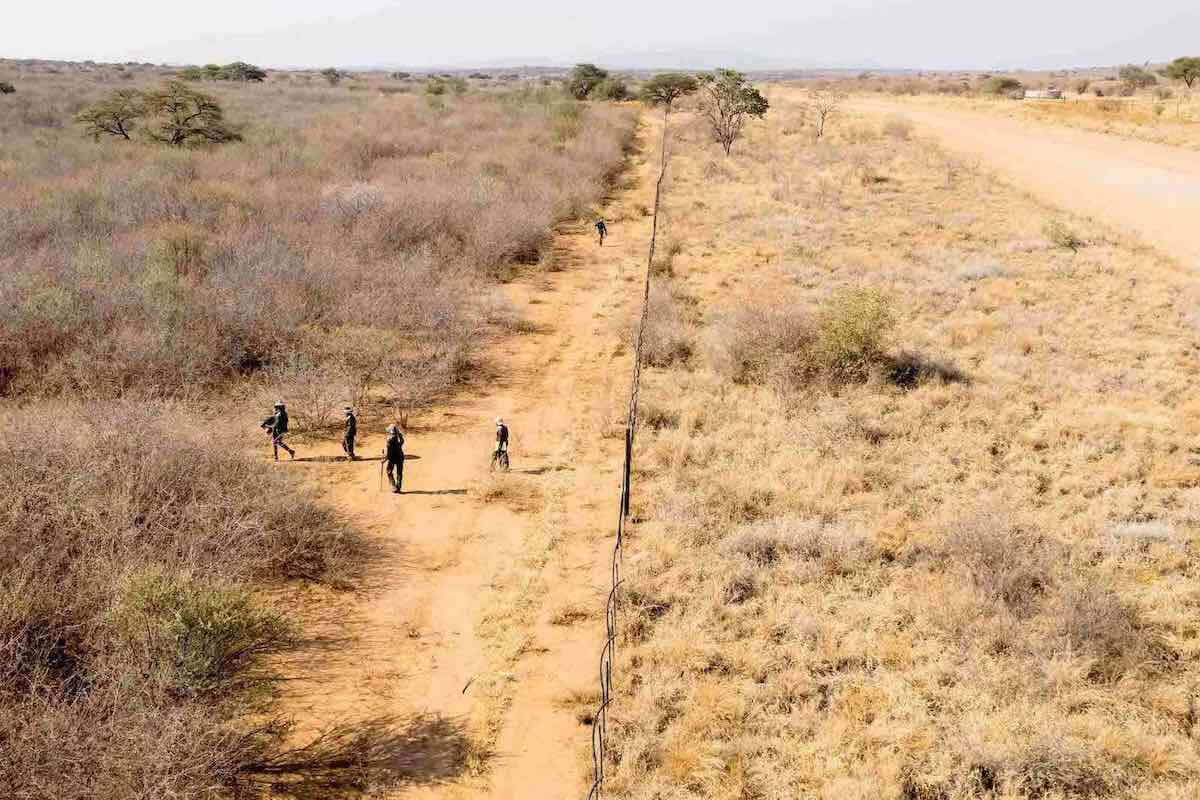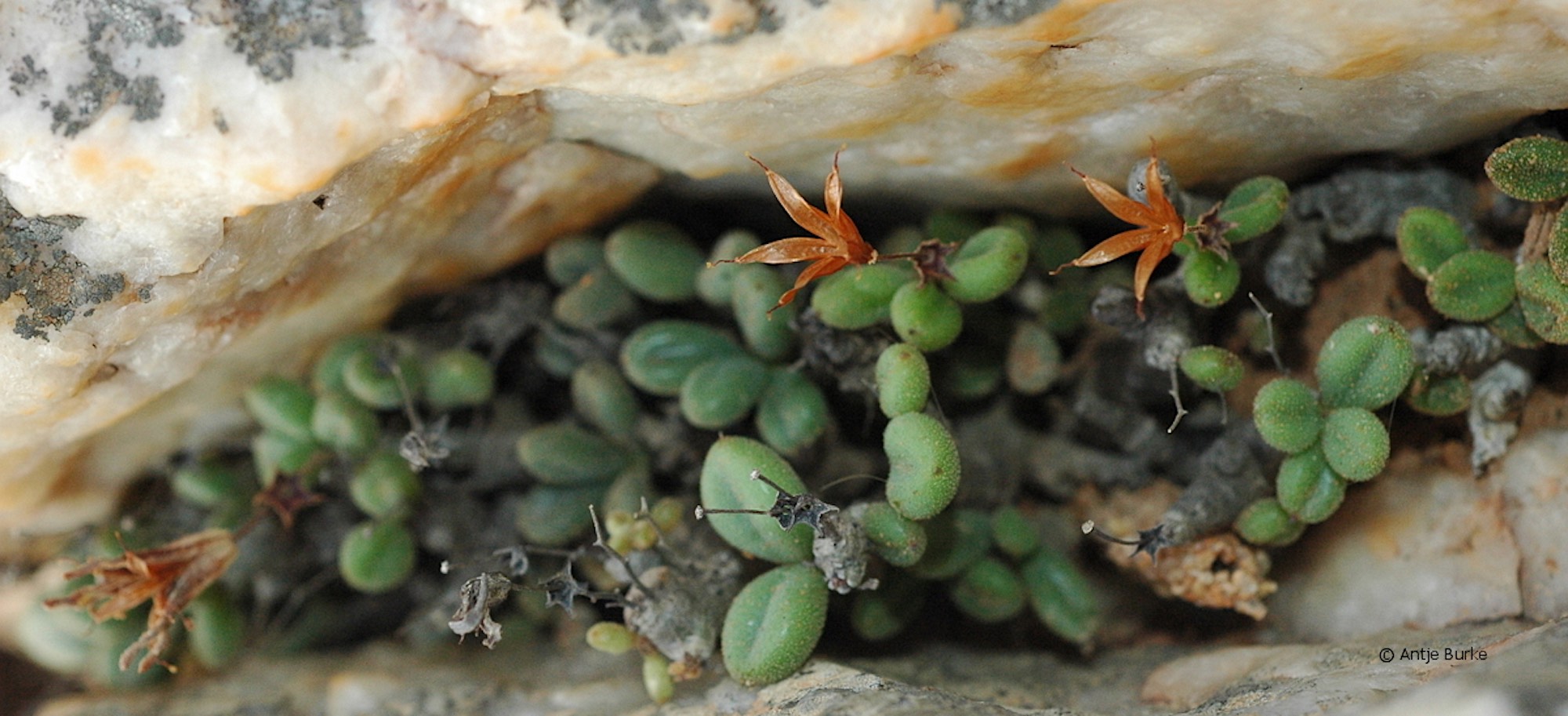
Nowhere else on Earth
The Sperrgebiet's endemic flora
By Antje Burke
8th August 2020
One of the many exceptional things about the new Tsau //Khaeb (Sperrgebiet) National Park is its plant diversity. Many of the plants found there are endemic – they occur nowhere else on earth! Once the new park is open to the public, more people will have a chance to see these plants while enjoying the scenic beauty of the Sperrgebiet. The influx of visitors and the development of tourism infrastructure may, however, threaten this botanical treasure chest if it is not planned with the plants in mind. Let me introduce you to some of these fascinating plants and tell you more about how we plan to protect them while developing the park for tourism.
The Sperrgebiet's exceptional plant diversity and endemism is mainly due to its diverse mosaic of landscapes and unusual climate. This is the northernmost tip of the Succulent Karoo biome, so called because succulents (plants with water-storing leaves or stems) are the most common plants in this biome. The coastal strip presents a different habitat to the inland Succulent Karoo and thus supports many Sperrgebiet endemics, such as some small shrubs of the daisy or parsley family. The greatest species diversity, however, is found in the mountains – such as the Aurus, Klinghardt and Obib ranges. Each mountain range supports many hundreds of plant species.
While the iconic quiver trees and other aloes will attract most of the attention from future park visitors, the most intriguing plants for botanists like me are the cryptic dwarf succulents and low-growing compact succulents. These are commonly known as vygies in Afrikaans or midday flowers in English – botanists call them mesembs. It is amongst these that most of the endemics in the Sperrgebiet evolved. One wonders why?
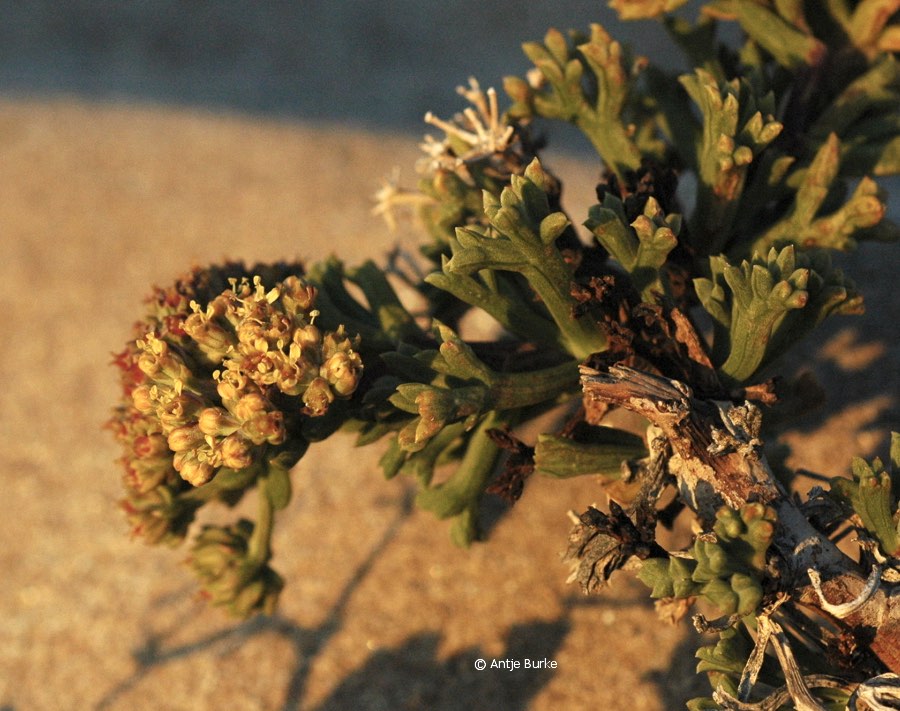
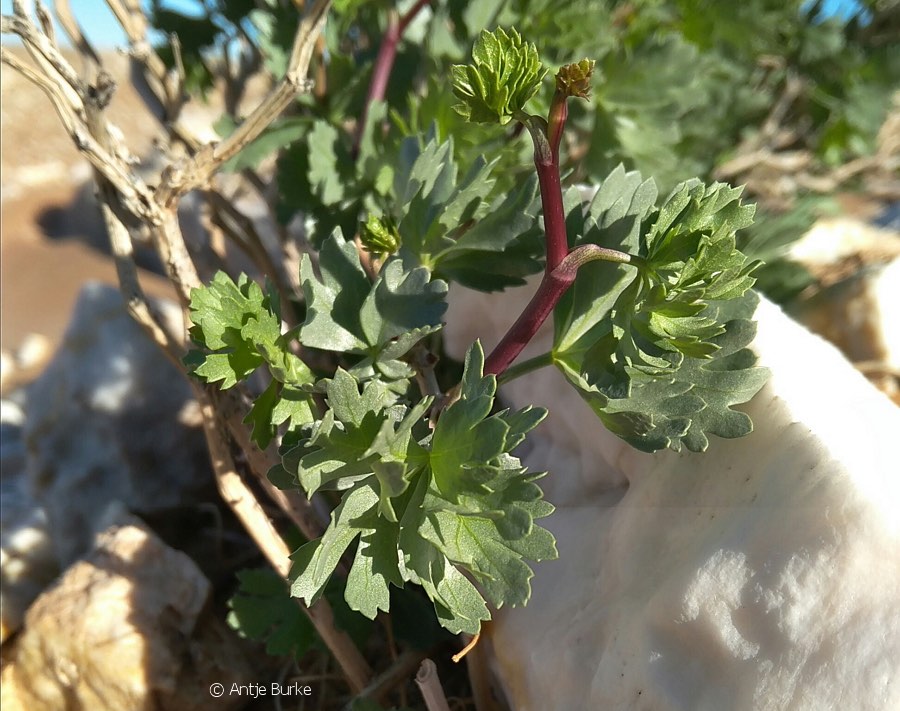
Research shows that a combination of old and new processes has created the unique conditions required for plant species to proliferate and diversify. While the Namib Desert has existed for at least 43 million years, the mesembs have evolved rapidly and quite recently. Two geographic factors also play a role. First, the Namib stretches over 1000 kilometres from the tropics in the north through the subtropics to the temperate regions in the south, providing a wide variety of different climates. Second, the Sperrgebiet part of the Namib receives both winter and summer rainfall. Some researchers also suggest that the relatively benign temperatures in the Sperrgebiet during the last glacial periods would have enabled tropical species to survive, which would have gone extinct elsewhere. These factors combine to drive both plant diversity throughout the Namib and endemism particularly within the Sperrgebiet.
Conservation is especially important for endemic species, but the term endemic
covers a wide range of possibilities. The area covered by an endemic species could be an entire country (e.g. Namibia), a biome that straddles country borders (e.g. the Succulent Karoo), a particular part of a biome (e.g. Sperrgebiet), or only one special habitat where that species occurs (e.g. a specific soil type on only one mountain). As a general principle, the smaller the area in which a plant or animal species occurs, the more protection it requires. The most vulnerable species are those that occur in one locality only, such as on a mountain, or even a particular habitat on a mountain – these are known as local or point endemics. The Sperrgebiet has several of these locally endemic species that could be threatened by seemingly innocuous developments like viewpoints and hiking trails if these are placed within their highly specific habitats.
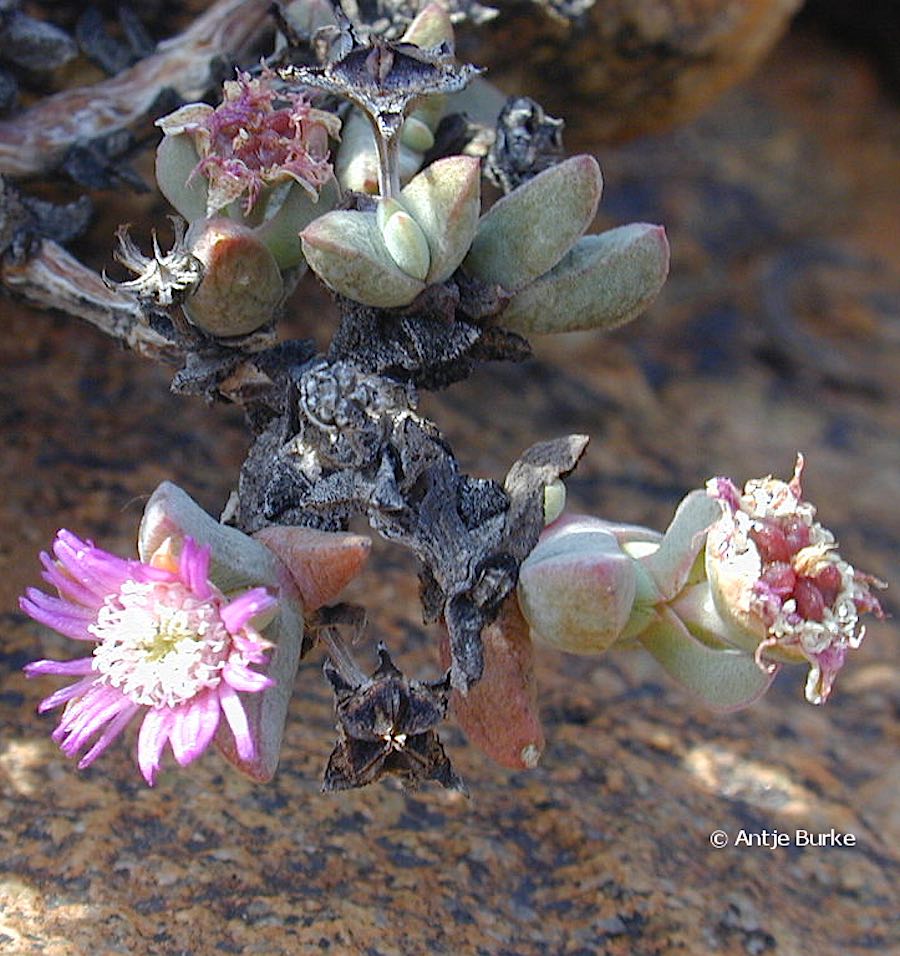
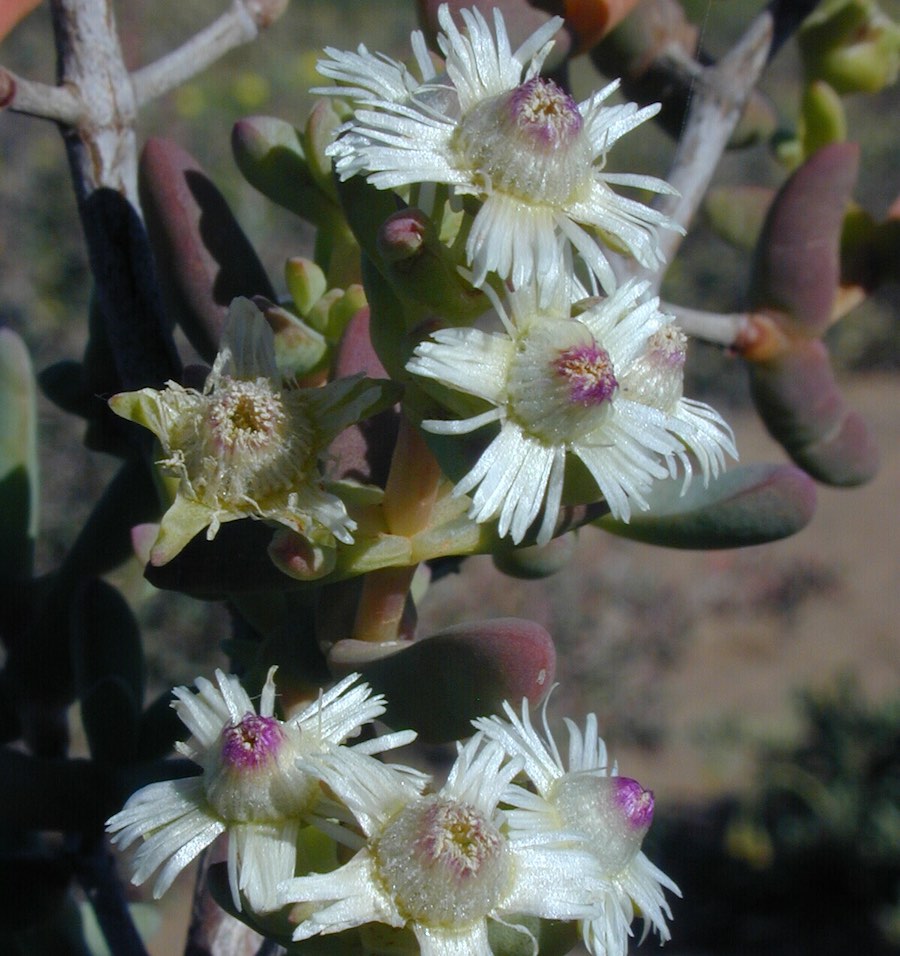
To complicate matters further, endemism and rarity are not necessarily linked. Although a country's endemics are rare in a global sense, not all of the national endemics are equally rare or abundant. Some grow in a wide range of habitats and climate zones and in great numbers; others may have a large geographic range, but within that range they occur at only a few localities and in low numbers. While both rare
and common
endemics are important to conserve, they clearly require different management strategies. Both types of endemics occur in the Sperrgebiet, so guiding tourism infrastructure development will require detailed knowledge of these species.
Besides the importance of endemic species for their own intrinsic value, they are also useful indicators for sensitive habitats. Concentrations of endemics raise a red flag for planning developments in the area around these plants. Botanists must then compile a detailed review of the species in that location and anticipate the impacts of the proposed development. If a plant has only ever been recorded from that particular spot and it is likely that most of the individuals of this species will be eliminated by the development, then we must proceed with utmost caution. First, the area and other likely habitats should be scouted for more of these plants. If they are not found and the spot is indeed the only place where they occur, then the development should either be stopped or shifted to another place with less sensitive habitats.
Although this may all sound logical and straightforward, it is not as simple as it seems. Very few people know about these endemics and are able to identify them. The Sperrgebiet endemics have been reasonably well protected for over 100 years due to its status as a highly restricted area, but change is on the horizon. It is therefore of utmost importance that those responsible for the protection of natural resources in the park, such as park managers and conservation scientists, can identify these endemic plants and recognise their relative rarity.
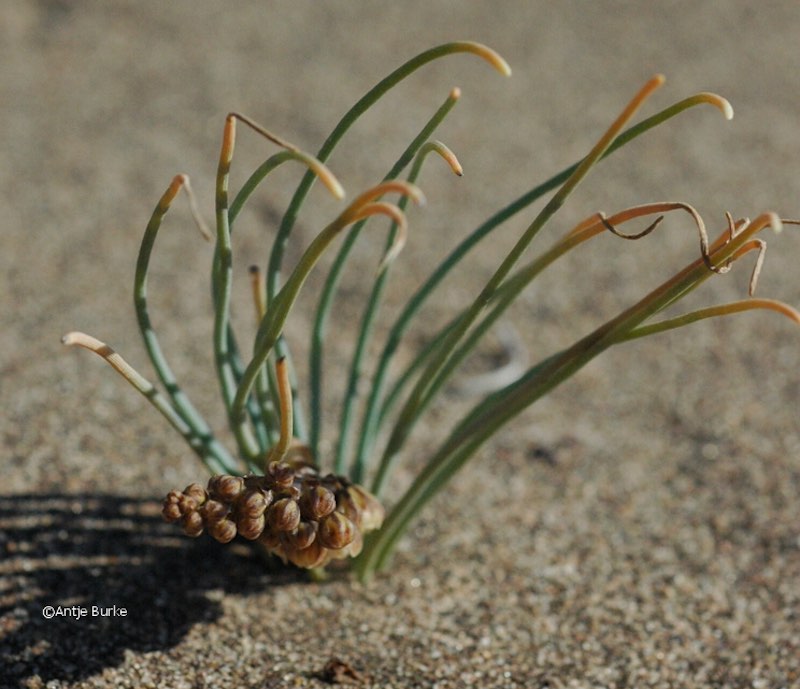

I have embarked on a project in collaboration with the National Botanical Research Institute and the Ministry of Environment, Forestry and Tourism to describe and catalogue the park's endemics, map their distribution, and provide an illustrated guide. The Namibian Chamber of Environment has committed to supporting this project with funding from B2Gold and Total Namibia. This information will not only help park managers and scientists, but it will also be available to students, tour guides and members of the public who are interested in the Sperrgebiet's fascinating flora.
My goal for this project is to provide the tools to protect the area's unique biodiversity while at the same time allowing tourism development and increased access to the public. Conservation and tourism must go hand-in-hand to ensure that our natural treasures are enjoyed and preserved both now and into the distant future.
Update October 2020: the guide and posters can be downloaded here and a scientific article on the endemics here.
Dr Antje Burke is an environmental scientist who has been advising the government and private sector on environmental matters in Namibia for over 30 years. Her current focus is on biodiversity, rehabilitation and mine closure planning. With a long list of research publications to her name, she is a widely respected biodiversity researcher in her field. The Namib Desert flora has fascinated Antje for a lifetime. Her field guide series on wild flowers of the Namib Desert, which includes those found in the Sperrgebiet, is a testimony to this. She has a great passion for the Sperrgebiet, particularly its flora.
For articles on similar topics, please click one of the following options:



